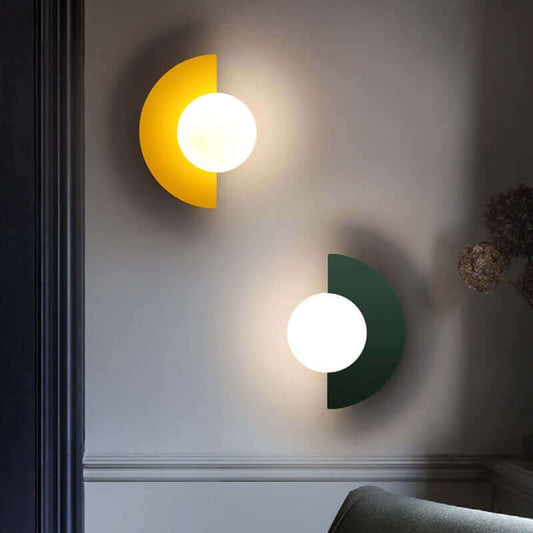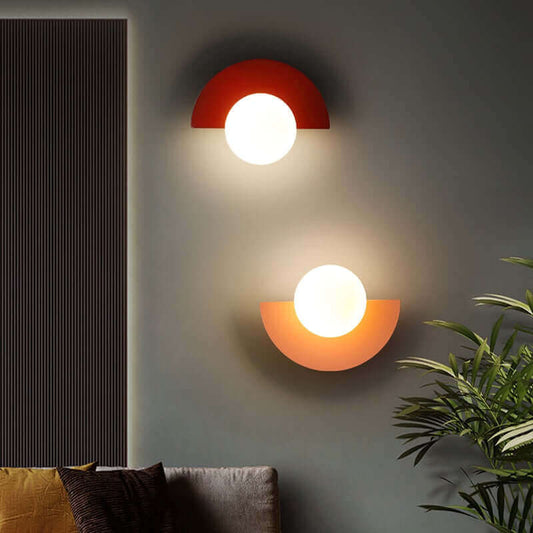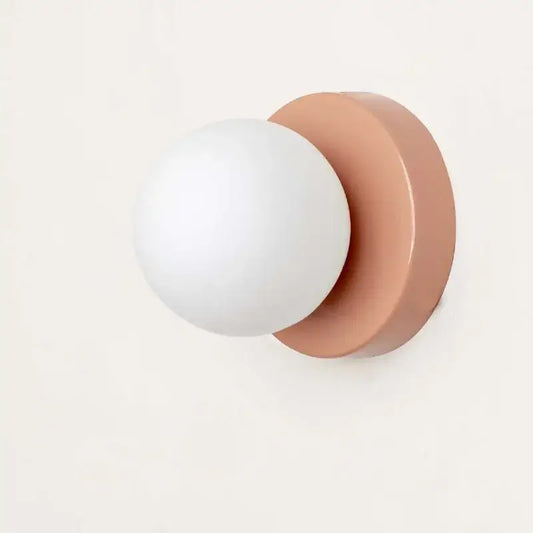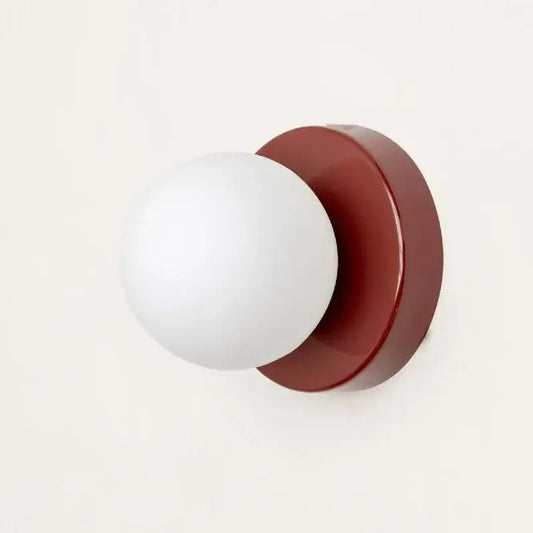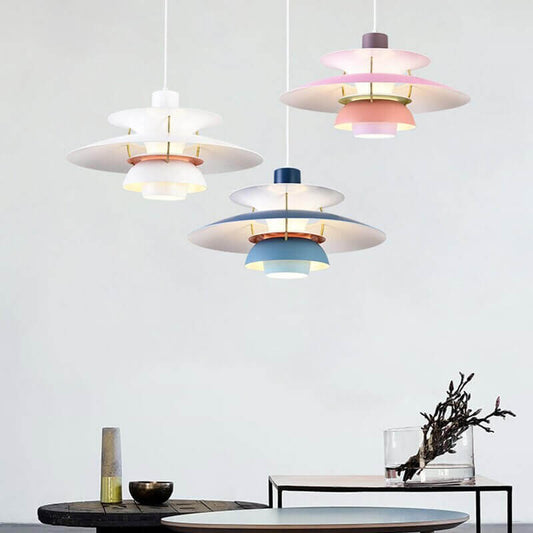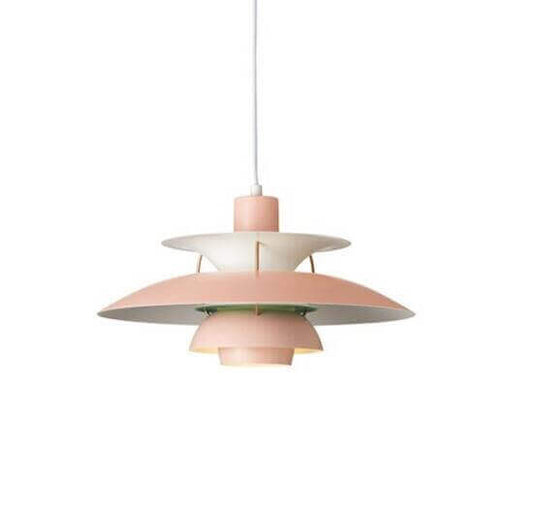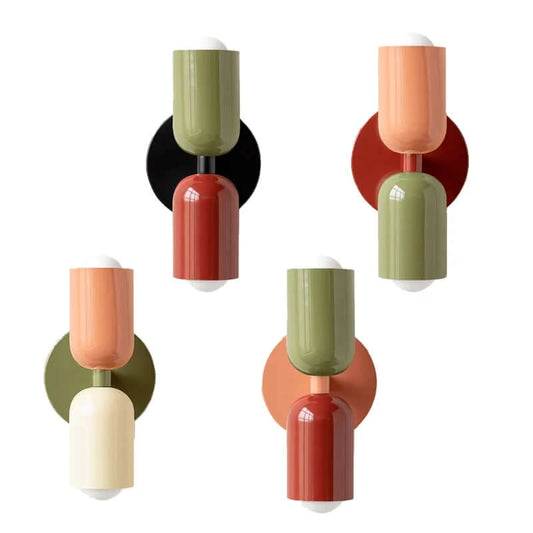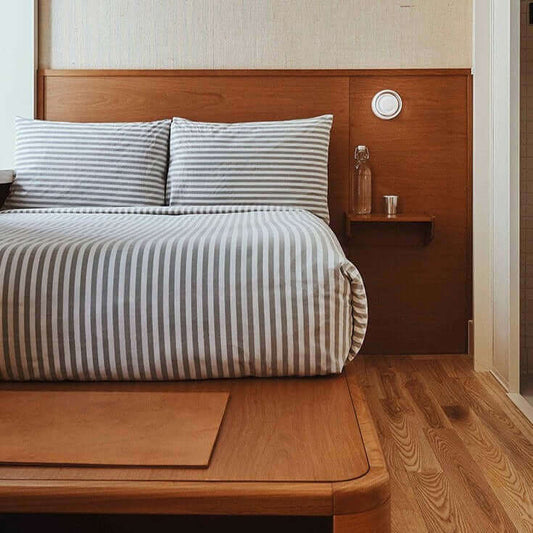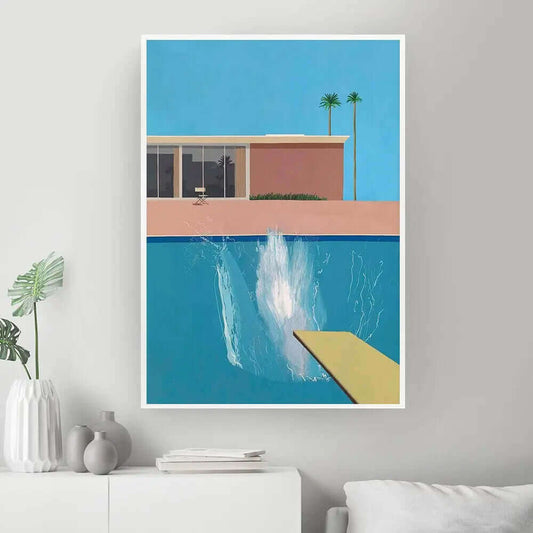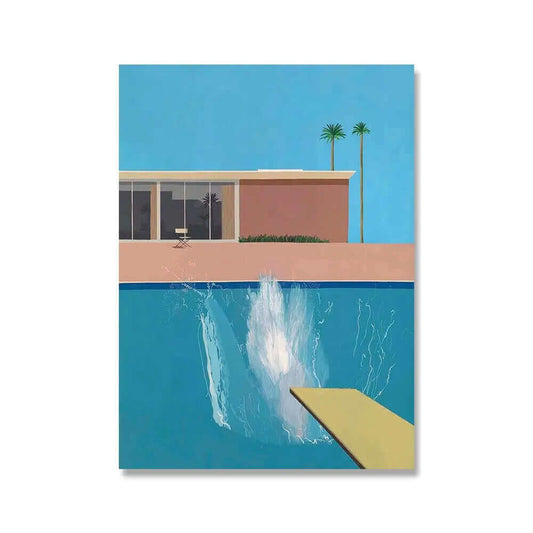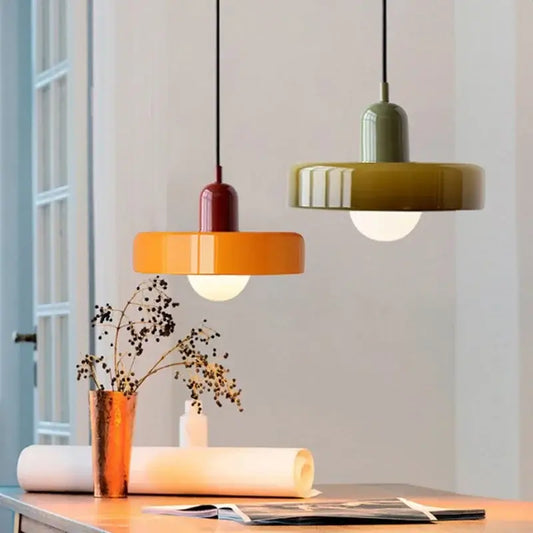Accent Wall
Definition: An interior design technique that involves painting or decorating one wall in a room differently from the others to create a focal point. It is used to add visual interest and draw attention to a specific area of the space. Accent walls can be achieved by using a different paint color, wallpaper, or textured materials compared to the surrounding walls. This design element allows for creative expression and can enhance the overall ambiance of a room.
Archway
Definition: A curved opening or passage in a wall that connects two spaces or rooms, often adding architectural interest and creating a sense of flow between areas. Archways can vary in size and design, from simple rounded openings to more elaborate and ornate structures. They are commonly used in traditional and classical interior design styles to add elegance and a touch of grandeur to spaces. Archways can also be seen in Mediterranean and Gothic-inspired interiors, enhancing the sense of openness and continuity in a visually appealing manner.
Armoire
Definition: A freestanding, tall wardrobe or cabinet with doors that provide ample storage space for clothing and other personal items. Armoires are versatile pieces of furniture that can be used in various rooms, such as the bedroom, living room, or hallway. They often feature drawers, shelves, and hanging rods, offering practical storage solutions while adding a touch of elegance to the interior. Armoires come in various styles and finishes, from classic and Victorian designs with intricate details to more modern and minimalist styles with sleek lines and simple forms.
Art Deco
Definition: A glamorous and influential design style that originated in the early 20th century, characterized by bold geometric patterns, lavish ornamentation, and a sense of luxury. Art Deco was popular in the 1920s and 1930s and has since made a comeback in contemporary interior design. This style often incorporates rich colors, metallic accents, and materials like glass, chrome, and lacquered wood. Art Deco interiors exude elegance and sophistication, with symmetrical layouts and striking decorative elements. This design style is ideal for those who appreciate a blend of modern and vintage aesthetics, creating a timeless and opulent ambiance in any space.
Barrel Vault
Definition: A ceiling or roof structure that features a semi-cylindrical or arched design, resembling the inside of a barrel or tunnel. Barrel vaults have been used in architecture for centuries and are often associated with ancient Roman and Gothic buildings. In interior design, barrel vaults are employed to add a sense of height and drama to rooms, particularly in entryways, hallways, and expansive spaces. They create a visual focal point and can be left exposed or decorated with intricate plasterwork and moldings for a more ornate appearance. Barrel vaults can be found in various design styles, including classical, Victorian, and Renaissance, enhancing the grandeur and sophistication of the space.
Bay Window
Definition: A window that projects outward from the main walls of a building, creating additional space and offering panoramic views. Bay windows are often composed of multiple panels of glass, with the center panel being larger and flanked by smaller panels on each side. They are commonly found in living rooms, dining areas, and bedrooms, allowing natural light to flood the interior and providing a cozy nook for seating or decorative displays. Bay windows are a hallmark of traditional and Victorian architecture, but they can also be incorporated into contemporary and modern interior designs, adding character and charm to the overall space.
Beadboard
Definition: A type of decorative paneling consisting of narrow wooden planks with a distinctive ridge or "bead" running along the joint between each board. Beadboard is typically installed vertically, creating a textured and visually appealing wall surface. This design element is commonly used in cottage, farmhouse, and coastal interior design styles, adding a touch of rustic charm and a sense of warmth to the space. Beadboard is often seen in entryways, kitchens, and bathrooms, providing a cottage-like or shabby-chic ambiance. It can be left in its natural wood finish or painted in various colors to complement the overall decor theme.
Canopy Bed
Definition: A bed frame featuring four tall posts, one at each corner, connected by a canopy structure that may be made of fabric or wood. Canopy beds have a rich history, dating back to medieval times when they were used to offer privacy and warmth. Today, canopy beds are prized for their elegant and luxurious appearance, making them a focal point in bedrooms. They can be found in various styles, ranging from ornate and traditional designs with elaborate carvings and draperies to more modern and minimalist versions with sleek lines and clean forms. Canopy beds add a sense of romance and opulence to the bedroom, making it a cozy and regal retreat.
Carrara Marble
Definition: A high-quality type of white or blue-grey marble with subtle veining, quarried in the city of Carrara, Italy. Carrara marble is renowned for its elegance, durability, and timeless beauty. It has been used in architecture and interior design for centuries, adorning iconic buildings and sculptures throughout history. In interior design, Carrara marble is a popular choice for countertops, backsplashes, flooring, and decorative accents, bringing a touch of luxury and sophistication to the space. Its soft and neutral color palette makes it versatile, seamlessly integrating into various design styles, from classic and traditional to modern and contemporary.
Chaise Lounge
Definition: A long, upholstered chair with a backrest, designed for relaxation and reclining. Chaise lounges are synonymous with luxury and comfort, offering a stylish and inviting seating option in bedrooms, living rooms, or even outdoor spaces. They come in a variety of styles, from classic and Victorian designs with intricate carvings and plush upholstery to more modern and streamlined silhouettes with clean lines and minimalist forms. Chaise lounges can be a striking accent piece or a functional addition to the overall seating arrangement, providing a comfortable and elegant spot to read, nap, or simply unwind.
Chandelier
Definition: A decorative light fixture suspended from the ceiling, typically featuring multiple arms or branches that hold light bulbs or candles. Chandeliers have a long history as symbols of opulence and luxury, often gracing the grand ballrooms and palaces of the past. Today, they are used as striking focal points in various interior spaces, from dining rooms and entryways to bedrooms and bathrooms. Chandeliers come in a wide range of designs, from ornate and crystal-embellished pieces to more modern and sleek versions with metal and glass elements. They add a touch of glamour and drama to the interior, creating a captivating and enchanting atmosphere.
Chevron
Definition: A V-shaped pattern formed by two lines meeting at an angle, creating a zigzag design. Chevron patterns have a dynamic and visually captivating effect, adding a sense of movement and energy to the interior. This design element is commonly used in textiles, flooring, and wall treatments, offering a modern and contemporary look. Chevron patterns can be incorporated into various interior styles, from Scandinavian and bohemian to mid-century modern and industrial. Whether used as an accent or a dominant feature, chevron patterns bring a trendy and youthful vibe to the space, making it feel dynamic and stylish.
Clerestory Windows
Definition: Windows set high in a wall, above eye level, to bring natural light into a space while maintaining privacy. Clerestory windows were historically used in Gothic cathedrals and Romanesque architecture to illuminate the high ceilings and the upper part of the interior. Today, they are a popular feature in modern and contemporary architecture, adding an abundance of natural light to rooms with tall walls and allowing for better air circulation. Clerestory windows can be found in various spaces, such as living rooms, hallways, and kitchens, creating an open and airy ambiance. Their inclusion in interior design emphasizes the importance of natural light and connects the space with the outdoors.
Column
Definition: A vertical, structural element that provides support to a building or serves as a decorative feature. Columns have been used in architecture for centuries, ranging from classical Greek and Roman styles with fluted shafts and intricate capitals to more modern and minimalist designs with sleek and unadorned forms. In interior design, columns can be both functional and decorative, dividing spaces and adding a sense of grandeur to the overall design. They are often seen in classical, neoclassical, and traditional interiors, where they contribute to a sense of elegance and timeless beauty. Columns may be made of various materials, including stone, wood, and metal, reflecting the style and character of the interior space.
Concrete
Definition: A versatile and durable building material made by mixing cement, sand, gravel, and water. Concrete is commonly used in construction for foundations, floors, and walls, but it has also gained popularity in interior design for its industrial and modern appeal. Polished concrete floors, for example, add a sleek and contemporary touch to spaces, while concrete countertops offer a minimalist and sophisticated look in kitchens and bathrooms. Concrete's neutral color and smooth texture make it an ideal canvas for various design styles, from industrial and minimalist to modern and Scandinavian. When combined with other materials like wood and metal, concrete creates a striking and balanced interior composition.
Cornice
Definition: A decorative molding installed at the junction of a wall and ceiling, adding visual interest and serving as a crowning feature of the room. Cornices have been used in architecture for centuries, with various designs and motifs reflecting different historical periods and styles. In interior design, cornices can be found in classical, neoclassical, and Victorian interiors, where they contribute to the sense of grandeur and elegance. Cornices may be made of plaster, wood, or other materials, and they are often embellished with intricate carvings and patterns. This design element frames the space, drawing the eye upward, and complements the overall decor theme, adding a touch of sophistication to the interior.
Credenza
Definition: A low, long sideboard or cabinet with doors and drawers, used for storage and display. Credenzas are versatile pieces of furniture that can be found in various interior spaces, from dining rooms to living rooms and offices. They often have a flat top surface, allowing for the display of decorative items, artwork, or a television. Credenzas come in different styles, ranging from classic and traditional designs with intricate details to more modern and streamlined silhouettes. They offer practical storage solutions for dinnerware, table linens, and other items while adding a touch of elegance and functionality to the interior.
Dado Rail
Definition: A horizontal molding or chair rail installed along the lower part of a wall, used for decorative and protective purposes. Dado rails have a long history, dating back to ancient Greek and Roman architecture, where they were used to protect the lower portion of walls from chairs and other furniture. In interior design, dado rails are a popular decorative element, adding a sense of height and sophistication to the room. They divide the wall into distinct sections, allowing for creative paint or wallpaper treatments, such as wainscoting or two-tone color schemes. Dado rails are commonly seen in classical, Victorian, and Georgian interiors, where they add a touch of traditional charm and elegance.
Damask
Definition: A richly patterned fabric, often featuring floral or arabesque designs, used for upholstery, curtains, and decorative accessories. Damask has a long history, originating in the Middle East and becoming popular during the Renaissance and Baroque periods in Europe. It is characterized by its contrasting matte and shiny areas, achieved by using different weaving techniques. In interior design, damask adds a sense of luxury and opulence to spaces, making it a favored choice for formal and elegant interiors. Damask patterns can be found in various color palettes, from bold and vibrant hues to more subtle and subdued tones, making it suitable for a range of design styles, including classic, Victorian, and French.
Delft Tile
Definition: Blue and white ceramic tiles with hand-painted Dutch designs, often used for backsplashes, accent walls, and decorative borders. Delft tiles have a long history, dating back to the 17th century, and are named after the city of Delft in the Netherlands, where they were first produced. In interior design, Delft tiles add a touch of traditional and vintage charm to spaces, particularly in kitchens, bathrooms, and entryways. They often feature intricate floral or scenic motifs, creating a charming and timeless look. Delft tiles can be combined with other types of ceramic tiles or used as standalone decorative elements, bringing a touch of history and character to the interior.
Eames Lounge Chair
Definition: A design classic, the Eames Lounge Chair is a mid-century modern armchair designed by Charles and Ray Eames. It is known for its sleek and iconic design, featuring molded plywood shells, premium leather upholstery, and a distinctive five-star aluminum base. The Eames Lounge Chair is praised for its comfort and style, making it a popular choice in modern and contemporary interior design. This iconic piece of furniture is often used as a statement piece in living rooms, home offices, and lounges, offering a perfect balance of form and function.
Eclectic
Definition: An interior design style that combines elements from various periods, cultures, and design aesthetics to create a unique and personalized look. Eclectic interiors are a reflection of the homeowner's individual tastes and preferences, featuring an eclectic mix of furniture, colors, patterns, and decorative objects. The eclectic style allows for creative expression and freedom, as it encourages the blending of diverse elements seamlessly. In an eclectic interior, one can find vintage and modern pieces coexisting harmoniously, with bold patterns and colors creating a vibrant and dynamic ambiance. This design style is perfect for those who appreciate an unconventional and daring approach to interior design, where each element tells a story and contributes to the overall narrative of the space.
Embossing
Definition: A decorative technique that involves creating a raised pattern or design on a surface, such as paper, fabric, or metal. Embossing adds texture and dimension to the material, creating a tactile and visually appealing effect. In interior design, embossing is commonly used on wallpapers, fabrics, and leather upholstery, adding a touch of elegance and luxury to the space. Embossed wallpapers, for example, can mimic the look of intricate plasterwork or architectural details, providing an affordable and versatile alternative to more expensive materials. This decorative technique is often seen in classic, Victorian, and Art Deco interiors, where it enhances the overall richness and sophistication of the design.
Etagere
Definition: A freestanding shelf unit with multiple open shelves, used for displaying decorative objects, books, and other items. Etagere is a French term meaning "shelf," and this piece of furniture is prized for its decorative and functional qualities. Etagere can come in various styles, from classic and Victorian designs with ornate details to more modern and minimalist structures with sleek lines. They are a versatile addition to interiors, providing storage and display solutions in living rooms, dining areas, and home offices. Etagere offers a stylish and elegant way to showcase collectibles, plants, and artwork, making it a cherished feature in many interior spaces.
Exposed Brick
Definition: Brickwork left visible without plaster or drywall covering, exposing the natural texture and color of the bricks. Exposed brick is a characteristic feature of industrial and loft-style interiors, where it adds a raw and rustic charm to the space. It can be found in old factories, warehouses, and converted industrial buildings, as well as in modern urban apartments seeking an industrial aesthetic. Exposed brick walls create a sense of history and character, contributing to the industrial ambiance while serving as a striking backdrop for contemporary furniture and decor. This design element has become popular in many design styles, from vintage and retro to modern and eclectic, as it brings a touch of urban grit and authenticity to the interior.
Farmhouse
Definition: A design style inspired by the rustic charm and simplicity of traditional farmhouses, particularly those found in the countryside. Farmhouse interiors feature natural materials, reclaimed wood, and vintage or distressed furniture, creating a warm and inviting atmosphere. This design style embraces a casual and laid-back approach to decor, with practical and functional elements taking center stage. Farmhouse kitchens, for example, often boast open shelving, apron-front sinks, and vintage-inspired fixtures. Farmhouse living rooms are furnished with comfortable and cozy seating, adorned with plush throw blankets and cushions. The farmhouse style is characterized by its mix of old and new, combining vintage finds with modern conveniences, resulting in a timeless and nostalgic interior.
Filigree
Definition: Delicate, intricate patterns or designs made of fine wire or metal. Filigree is a decorative technique that dates back to ancient civilizations and has been used in jewelry, metalwork, and architecture. In interior design, filigree can be found in various decorative elements, such as lighting fixtures, furniture, and decorative accessories. It adds a sense of refinement and elegance to the space, with its ornate and delicate patterns evoking a sense of craftsmanship and artistry. Filigree details are often seen in classical, Victorian, and Baroque interiors, where they enhance the overall richness and sophistication of the design. Additionally, filigree accents can be found in bohemian and Moroccan-inspired spaces, contributing to the exotic and intricate ambiance.
Flatweave Rug
Definition: A rug woven on a loom, resulting in a thin and flat surface with no pile. Flatweave rugs are lightweight and versatile, making them suitable for various interior spaces. They are often used in Scandinavian and modern interiors, where their minimalistic and clean design complements the overall decor theme. Flatweave rugs come in various patterns and colors, from simple stripes and geometric designs to more intricate motifs. They can be easily moved and rotated, allowing for creative and flexible placement in different areas of the home. Flatweave rugs offer a practical and durable flooring solution, providing a subtle and textured backdrop for the furniture and decor in the interior.
Geometric Patterns
Definition: Repeating patterns featuring geometric shapes like triangles, squares, and circles. Geometric patterns have been used in art and design for centuries, with their symmetrical and repetitive nature creating a sense of order and harmony. In interior design, geometric patterns can be found in wallpapers, textiles, and tile designs, adding a modern and contemporary touch to the space. Geometric patterns can be bold and vibrant, creating a striking visual impact, or subtle and subdued, adding a hint of texture and interest to the interior. This design element is versatile and can be used in various design styles, from art deco and modern to Scandinavian and bohemian, allowing for endless creative possibilities.
Gothic
Definition: A design style inspired by the Gothic architecture of the medieval period, characterized by pointed arches, ribbed vaults, and elaborate ornamentation. Gothic interiors are known for their dramatic and majestic appearance, often found in cathedrals and historic buildings. In modern interior design, Gothic elements can be incorporated to add a sense of grandeur and historical charm to the space. Gothic-inspired interiors may feature richly carved woodwork, stained glass windows, and intricate patterns. The color palette is often dark and moody, with deep shades of red, blue, and purple creating a mysterious and opulent ambiance. Gothic interiors are ideal for those who appreciate a sense of drama and romance in their living spaces, as this style evokes a sense of awe and wonder.
Grandmillennial
Definition: A contemporary design trend that celebrates traditional and vintage elements with a modern twist. Also known as "Granny Chic" or "New Traditional," the Grandmillennial style combines classic design elements with bold patterns and eclectic decor. This emerging trend appeals to younger generations who have an appreciation for nostalgic and vintage aesthetics while infusing their spaces with youthful energy and personality. Grandmillennial interiors often feature floral patterns, chintz fabrics, and vintage furniture pieces mixed with contemporary artwork and bold color combinations. This design style embraces a maximalist approach, creating a space that feels comfortable, vibrant, and lived-in while still exuding a sense of elegance and timelessness.
Herringbone
Definition: A pattern consisting of rows of V-shaped lines or rectangles arranged in a staggered and overlapping configuration, resembling the bones of a fish. Herringbone patterns have been used in architecture and design for centuries and can be found in various materials, including wood, tile, and textiles. In interior design, herringbone patterns are commonly used in flooring, creating a sophisticated and visually appealing look. Wood floors with a herringbone pattern add elegance and warmth to spaces, while herringbone tile designs create a chic and modern vibe. This pattern is often associated with classic and traditional interiors, but it has also become popular in contemporary and Scandinavian designs, where it adds a timeless and dynamic element to the space.
Hygge
Definition: A Danish concept that embraces coziness, contentment, and a feeling of well-being and comfort. Hygge is not just a design style but a way of life, focusing on creating a warm and inviting atmosphere that promotes relaxation and happiness. In interior design, hygge is achieved through the use of soft and plush textiles, warm lighting, and natural materials like wood and wool. It encourages the incorporation of comfortable seating, fluffy rugs, and a cozy fireplace to create a sanctuary from the outside world. Hygge interiors are characterized by their simplicity and minimalism, where the focus is on creating a sense of peace and contentment in the space. This design philosophy is ideal for those seeking a calm and serene environment that fosters connection and joy.
Industrial
Definition: An interior design style inspired by the raw and utilitarian aesthetic of industrial spaces, such as warehouses and factories. Industrial interiors celebrate exposed brick walls, concrete floors, and metal elements, embracing the beauty of unfinished and weathered materials. This design style often features open floor plans, high ceilings, and large windows, maximizing natural light and emphasizing the sense of space. Industrial interiors incorporate functional and utilitarian furniture pieces with a touch of vintage charm, making use of repurposed items and salvaged materials. Lighting is a key element in industrial design, with exposed bulbs, pendant lights, and metal fixtures adding an urban and edgy vibe to the space. Industrial interiors are perfect for those who appreciate a modern and minimalist look with an urban and industrial twist.
Jute
Definition: A natural fiber derived from the stem of the jute plant, known for its strength and durability. Jute is commonly used in interior design for area rugs, furniture upholstery, and decorative accessories. Jute rugs have a textured and organic look, making them a popular choice in bohemian and coastal interiors. Jute upholstery adds a touch of rustic and earthy charm to furniture pieces, while jute baskets and planters bring a natural and eco-friendly element to the decor. Jute is a sustainable and renewable material, making it an environmentally conscious choice for interior design. Its neutral color and versatile texture allow it to complement a variety of design styles, from bohemian and farmhouse to Scandinavian and eclectic.
Kilim
Definition: A flat-woven rug with intricate patterns and vibrant colors, often associated with Turkish or Middle Eastern designs. Kilim rugs have a long history, dating back to ancient civilizations, and are handmade using a traditional weaving technique. In interior design, Kilim rugs are prized for their beauty and craftsmanship, making them a cherished focal point in various spaces. They add a touch of cultural richness and a sense of wanderlust to the interior, perfect for bohemian and eclectic styles. Kilim rugs come in a variety of sizes and patterns, from geometric motifs to floral designs, allowing for creative and unique placements in the home. They are often used as area rugs, wall hangings, or even as decorative upholstery for furniture pieces.
Lattice
Definition: An open framework consisting of crisscrossing strips or bars, creating a pattern of squares or diamond shapes. Lattice patterns have been used in architecture and design for centuries, adding a sense of privacy and visual interest to spaces. In interior design, lattice motifs can be found in furniture, decorative screens, and room dividers, allowing for creative zoning and delineation of spaces. Lattice patterns can be solid or more intricate, with variations in size and spacing, making them suitable for various design styles. They add a touch of elegance and sophistication to the interior, particularly when incorporated into traditional, Victorian, or Middle Eastern-inspired spaces.
Linen
Definition: A natural fabric made from the fibers of the flax plant, known for its softness, breathability, and durability. Linen is commonly used in interior design for upholstery, bedding, curtains, and tablecloths. Linen fabrics have a casual and relaxed look, making them a popular choice in coastal, farmhouse, and Scandinavian interiors. Linen drapes create an airy and light ambiance in the space, while linen bedding adds a touch of luxury and comfort to the bedroom. This natural material comes in various colors and textures, ranging from crisp and refined to soft and textured, making it suitable for a range of design styles. Linen is an eco-friendly and sustainable choice for interior design, contributing to a more natural and organic living environment.
Loft
Definition: An interior design style inspired by the conversion of industrial spaces, such as warehouses, factories, and mills, into residential or commercial properties. Loft interiors celebrate the raw and unpolished charm of industrial architecture, with open floor plans, exposed brick walls, and high ceilings. This design style often features large windows, allowing for an abundance of natural light and a seamless connection to the outdoors. Loft spaces may include mezzanines, creating additional levels and functional areas. Industrial materials like concrete, metal, and reclaimed wood are key components of loft interiors, contributing to the urban and edgy vibe. Loft design is perfect for those who seek an eclectic and dynamic living environment that combines history, creativity, and a modern urban lifestyle.
Mediterranean
Definition: A design style inspired by the coastal regions of Southern Europe, particularly countries like Spain, Italy, and Greece. Mediterranean interiors are characterized by their warm and inviting ambiance, with a focus on natural materials, earthy tones, and rustic charm. This design style often features arched doorways, terra-cotta tiles, and wrought-iron accents. Mediterranean color palettes include shades of blue, terracotta, and sandy beige, creating a connection to the sea and the sun-drenched landscapes. The Mediterranean style embraces a laid-back and casual approach to decor, with an emphasis on comfort and relaxation. This design style is perfect for those who appreciate a sense of tranquility and a touch of European elegance in their living spaces.
Mid-Century Modern
Definition: A design style that emerged in the mid-20th century, characterized by clean lines, organic forms, and a seamless integration of indoor and outdoor spaces. Mid-century modern interiors celebrate the simplicity and functionality of modernist design, with a focus on creating a harmonious and uncluttered environment. This design style often features iconic furniture pieces, such as the Eames Lounge Chair and the Noguchi coffee table, as well as streamlined and minimalist silhouettes. Mid-century modern color palettes include bold and vibrant hues, as well as earthy and natural tones. This design style is perfect for those who appreciate a timeless and sophisticated look with a touch of retro charm and a nod to the golden era of design.
Monochromatic
Definition: An interior design scheme that revolves around a single color or hue, using various shades and tones of that color to create a harmonious and cohesive look. Monochromatic interiors exude a sense of simplicity, elegance, and sophistication, with a focus on texture and contrast rather than a multitude of colors. This design approach allows for a seamless flow between different elements in the space, creating a serene and balanced environment. Monochromatic interiors can be achieved with various colors, from soft and calming neutrals to bold and dramatic shades. This design scheme is versatile and can be applied to a range of design styles, from modern and minimalist to classic and contemporary.
Moroccan
Definition: A design style inspired by the rich and exotic culture of Morocco, characterized by vibrant colors, intricate patterns, and a blend of Middle Eastern and North African influences. Moroccan interiors are known for their opulence and luxury, with an emphasis on intricate tilework, colorful textiles, and ornate furnishings. This design style often features arched doorways, mosaic tiles, and handcrafted lanterns. Moroccan color palettes include shades of blue, red, gold, and green, creating a sense of warmth and vibrancy in the space. Moroccan design is perfect for those who appreciate a sense of exoticism and a touch of mystery in their living spaces, as it evokes the atmosphere of a traditional Moroccan riad or palace.
Murano Glass
Definition: Hand-blown glassware and decorative objects crafted on the island of Murano, near Venice, Italy. Murano glass is renowned for its exquisite craftsmanship and vibrant colors, making it a prized addition to interior design. In interior decor, Murano glass is often used for chandeliers, vases, and decorative sculptures, adding a touch of luxury and artistry to the space. The tradition of Murano glassmaking dates back to the 13th century, and the island is home to skilled artisans who continue to create beautiful and unique glass pieces using traditional techniques. Murano glass complements various design styles, from classic and Art Deco to modern and contemporary, adding a sense of sophistication and elegance to the interior.
Neoclassical
Definition: A design style inspired by the revival of classical Greek and Roman art and architecture, prominent during the 18th and 19th centuries. Neoclassical interiors feature elegant and symmetrical spaces, with a focus on order, proportion, and balance. This design style often incorporates decorative elements like columns, pilasters, and pediments, as well as motifs such as Greek key and acanthus leaves. Neoclassical color palettes are typically light and airy, with shades of cream, beige, and soft pastels. This design style is ideal for those who appreciate a sense of grandeur and a connection to the timeless beauty of ancient civilizations. Neoclassical interiors exude sophistication and refinement, creating an atmosphere of elegance and grace.
Octagonal
Definition: A shape or design with eight sides or angles, often seen in architectural elements and decorative features. In interior design, octagonal motifs can be found in windows, mirrors, and tile designs, adding a unique and eye-catching element to the space. Octagonal windows, in particular, are a distinctive architectural feature, allowing for a balance of light and creating an interesting focal point. Octagonal mirrors bring a touch of artistry and elegance to walls, enhancing the visual appeal of the interior. Octagonal tile designs, such as the "octagon and dot" pattern, add a classic and timeless touch to floors and walls. This geometric design element complements various design styles, from classic and traditional to modern and eclectic.
Ombre
Definition: A gradual blending of colors from light to dark or vice versa, creating a gradient effect. Ombre has become a popular design trend, used in textiles, wallpapers, and even painted walls. In interior design, ombre can be seen in curtains, rugs, and decorative cushions, adding a touch of visual interest and creativity to the space. Ombre wallpapers create a striking and artistic backdrop, while ombre textiles bring a sense of depth and movement to upholstery and bedding. This design element is versatile and can be applied to various design styles, from bohemian and eclectic to modern and minimalist, offering endless possibilities for creative and stylish interiors.
Ornate
Definition: Elaborately and intricately decorated with ornamental details, such as intricate carvings, moldings, and motifs. Ornate interiors are often associated with classical and Victorian design styles, where opulence and grandeur are emphasized. Ornate architecture, such as elaborate columns and pilasters, adds a sense of drama and sophistication to spaces. In interior design, ornate decorative elements can be found in furniture, mirrors, and chandeliers, creating a sense of luxury and historical charm. Ornate patterns and motifs, such as acanthus leaves and fleur-de-lis, are often seen in wallpapers, textiles, and rugs, adding a touch of timeless elegance to the interior. Ornate design is ideal for those who appreciate a sense of tradition and a connection to the past in their living spaces.
Paisley
Definition: A distinctive and intricate teardrop-shaped pattern, often featuring vibrant colors and intricate details. Paisley patterns have a long history, originating in Persia and becoming popular during the Renaissance in Europe. In interior design, paisley can be found in textiles, wallpapers, and decorative accessories, adding a touch of bohemian and exotic charm to the space. Paisley textiles, such as curtains and throw pillows, create a bold and vibrant statement, while paisley wallpapers add a sense of richness and texture to walls. This design element is perfect for those who appreciate a touch of global-inspired style and a sense of wanderlust in their living spaces.
Panelling
Definition: Decorative paneling applied to walls, often consisting of wood or other materials. Panelling can be found in various styles, from classic and traditional to modern and contemporary. It adds a sense of texture and dimension to the interior, creating a warm and inviting ambiance. In interior design, panelling is commonly used in entryways, hallways, and dining rooms, as well as in libraries and home offices. It can be left in its natural wood finish or painted in a color that complements the overall decor theme. Panelling enhances the architectural character of the space, adding a touch of elegance and sophistication to the interior.
Pastel
Definition: Soft and light colors with a delicate and soothing quality, often used in interior design to create a gentle and serene atmosphere. Pastel colors include shades of pink, blue, green, and lavender, evoking a sense of tranquility and calmness in the space. Pastel interiors are perfect for those who appreciate a delicate and feminine look, as these colors add a touch of elegance and sophistication to the decor. Pastel color palettes can be used in various design styles, from vintage and shabby chic to Scandinavian and coastal, creating a light and airy ambiance that feels inviting and comforting.
Pattern Mixing
Definition: A design approach that involves combining various patterns and textures to create an eclectic and visually engaging look. Pattern mixing allows for a creative and playful approach to interior design, where different patterns and colors are layered to create a unique and dynamic space. This design approach often involves combining floral patterns with stripes, geometric motifs with animal prints, and traditional designs with modern graphics. Pattern mixing adds a sense of energy and personality to the interior, creating a space that reflects the individual's taste and style. This design approach is perfect for those who appreciate a bold and eclectic look that celebrates individuality and creativity.
Pendant Light
Definition: A light fixture that hangs from the ceiling, typically suspended by a cord, chain, or rod. Pendant lights come in various styles and designs, from simple and minimalist to ornate and decorative. They are a popular choice for providing focused and task lighting in specific areas, such as kitchen islands, dining tables, and reading nooks. Pendant lights can also be used as statement pieces, adding a touch of drama and elegance to the interior. This versatile light fixture comes in various shapes and sizes, allowing for creative and flexible placement in different interior spaces. Pendant lights contribute to the overall ambiance of the room, enhancing the decor and functionality of the space.
Plaid
Definition: A pattern consisting of intersecting vertical and horizontal lines, forming squares or rectangles. Plaid patterns are often associated with traditional and rustic design styles, evoking a sense of warmth and coziness. In interior design, plaid can be found in textiles, upholstery, and decorative accessories, adding a touch of classic and timeless charm to the space. Plaid textiles, such as blankets and throw pillows, create a sense of comfort and nostalgia, while plaid upholstery adds a touch of traditional elegance to furniture pieces. This pattern is versatile and can be used in various design styles, from farmhouse and country to vintage and retro, offering a cozy and inviting ambiance in the interior.
Pop Art
Definition: An art movement that emerged in the 1950s and 1960s, characterized by its use of bright colors, bold patterns, and popular culture references. Pop art celebrates everyday objects and consumer goods, incorporating elements from mass media and advertising. In interior design, pop art can be seen in artwork, decorative accessories, and furniture, adding a sense of fun and playfulness to the space. Pop art prints and posters create a striking and contemporary statement on the walls, while pop art sculptures and furniture pieces add a touch of modernity and artistic flair. This design element is ideal for those who appreciate a vibrant and energetic look that celebrates popular culture and embraces the spirit of the modern age.
Recycled Materials
Definition: Materials that have been reclaimed or repurposed from discarded items or waste products, contributing to a more sustainable and eco-friendly approach to interior design. Recycled materials can include reclaimed wood, recycled glass, and upcycled textiles, among others. In interior design, recycled materials are used in furniture, decorative accessories, and even building materials, adding a unique and environmentally conscious touch to the space. Recycled wood can be used for flooring and furniture, adding a rustic and authentic look to the interior. Recycled glass can be transformed into decorative vases and sculptures, contributing to a more conscious and responsible living environment. This design approach is perfect for those who appreciate a sustainable and mindful approach to interior design, where creativity and innovation coexist with environmental responsibility.
Relief
Definition: A decorative technique that creates a three-dimensional effect on a surface, such as a wall or panel. Relief can be achieved through carving, molding, or embossing, adding texture and visual interest to the material. In interior design, relief is often used in wall panels, decorative moldings, and ceiling tiles, creating a sense of depth and dimension in the space. Relief patterns and motifs can range from simple and understated to intricate and ornate, making it a versatile design element suitable for various design styles. Relief adds a touch of craftsmanship and artistry to the interior, elevating the overall decor and creating a unique and captivating environment.
Retro
Definition: A design style inspired by the aesthetics of the past, particularly the 1950s, 1960s, and 1970s. Retro interiors celebrate the nostalgia of mid-century design, with a focus on bold colors, geometric patterns, and sleek lines. This design style often features iconic furniture pieces, such as egg chairs and sunburst mirrors, as well as vibrant wallpaper and shag carpets. Retro color palettes include shades of orange, turquoise, and mustard yellow, creating a fun and energetic ambiance in the space. Retro design is perfect for those who appreciate a sense of vintage charm and a playful approach to interior decor, as it brings the spirit of the past into the modern age.
Scandinavian
Definition: A design style inspired by the minimalist and functional approach of Scandinavian countries, such as Denmark, Norway, and Sweden. Scandinavian interiors embrace simplicity, natural materials, and a light color palette, creating a serene and inviting atmosphere. This design style often features clean lines, uncluttered spaces, and a focus on natural light and nature. Scandinavian furniture is known for its simple and timeless design, often made of light-colored wood and natural fibers. Scandinavian color palettes include shades of white, gray, and pastels, creating a sense of calm and tranquility in the space. Scandinavian design is perfect for those who appreciate a clutter-free and harmonious living environment, as it emphasizes the beauty of simplicity and the connection to nature.
Shabby Chic
Definition: A design style that celebrates vintage and worn-out furniture and decor, creating a charming and romantic look. Shabby Chic interiors often feature distressed furniture, floral patterns, and soft pastel colors, evoking a sense of nostalgia and comfort. This design style embraces imperfections and aged finishes, creating a sense of warmth and character in the space. Shabby Chic textiles, such as ruffled curtains and patchwork quilts, add a touch of femininity and elegance to the interior. This design style is perfect for those who appreciate a cozy and lived-in look that celebrates the beauty of aged and weathered materials, as it creates a homey and welcoming atmosphere.
Shiplap
Definition: A type of wooden board or panel with a rabbet joint, used for cladding walls and ceilings. Shiplap is often associated with rustic and coastal design styles, adding a touch of warmth and texture to the interior. In interior design, shiplap is commonly used in beach houses, cottages, and farmhouse-style homes, as it creates a sense of casual and laid-back charm. Shiplap walls can be left in their natural wood finish or painted in white or soft pastel colors, creating a bright and airy look. This design element is versatile and can be used in various spaces, from living rooms and bedrooms to bathrooms and kitchens, offering a timeless and classic backdrop for the decor.
Steampunk
Definition: A design style inspired by the industrial and Victorian era, characterized by a blend of retro-futuristic elements and steam-powered machinery. Steampunk interiors celebrate the aesthetics of the 19th century, with a focus on metalwork, gears, and vintage machinery. This design style often features exposed pipes, antique clocks, and leather upholstery, creating a sense of nostalgia and adventure in the space. Steampunk color palettes include shades of brass, copper, and aged brown, adding a touch of authenticity to the interior. Steampunk design is perfect for those who appreciate a sense of whimsy and a love for history and innovation, as it combines the romance of the past with the intrigue of the future.
Sunburst
Definition: A design motif resembling the rays of the sun, often used in decorative mirrors and furniture. Sunburst patterns have been used in various design styles throughout history, from classical architecture to Art Deco and Mid-century Modern. In interior design, sunburst mirrors are a popular decorative accessory, adding a touch of glamour and drama to walls. Sunburst furniture, such as coffee tables and chandeliers, creates a striking and sculptural statement in the space. Sunburst patterns are versatile and can be adapted to various design styles, from classic and elegant to bold and contemporary, making it a timeless and eye-catching element in the interior.
Terrazzo
Definition: A composite material made of chips of marble, quartz, or other materials set in concrete or resin, resulting in a speckled and textured surface. Terrazzo has a long history, dating back to ancient times, and has been used in architecture and design for its durability and aesthetic appeal. In interior design, terrazzo is commonly used for flooring, countertops, and decorative accessories, adding a touch of modern and retro charm to the space. Terrazzo surfaces come in various colors and patterns, creating a vibrant and dynamic look. This design element is perfect for those who appreciate a unique and artistic touch in their living spaces, as terrazzo adds a sense of craftsmanship and individuality to the interior.
Tufted
Definition: A decorative technique that involves sewing folds or buttons into a fabric, creating a raised pattern and a plush texture. Tufted upholstery is commonly seen in sofas, chairs, and headboards, adding a touch of elegance and sophistication to furniture pieces. Tufted designs can range from simple and understated to elaborate and ornate, making it a versatile design element suitable for various design styles. Tufted furniture exudes a sense of luxury and comfort, inviting users to relax and unwind. In interior design, tufted details can also be found in cushions, throw pillows, and ottomans, adding a touch of texture and visual interest to the decor.
Urban
Definition: A design style inspired by the aesthetics of city living, with a focus on contemporary and industrial elements. Urban interiors celebrate the raw and utilitarian beauty of urban architecture, such as exposed brick walls, concrete floors, and metal fixtures. This design style often features open floor plans, high ceilings, and large windows, maximizing natural light and emphasizing the sense of space. Urban interiors incorporate functional and practical furniture pieces with a modern and minimalist vibe, creating a clean and uncluttered environment. Lighting is a key element in urban design, with industrial-style pendant lights and track lighting adding an urban and edgy vibe to the space. Urban interiors are perfect for those who appreciate a modern and minimalist look with a touch of urban grit and authenticity.
Velvet
Definition: A luxurious and soft fabric with a plush pile, often used in interior design for upholstery, curtains, and decorative accessories. Velvet has a rich and opulent look, making it a popular choice for creating a sense of elegance and glamour in the space. Velvet upholstery adds a touch of luxury and sophistication to furniture pieces, while velvet curtains create a sense of drama and grandeur in the room. Velvet throw pillows and blankets add a cozy and inviting touch to the decor. Velvet comes in various colors and textures, from smooth and sleek to crushed and embossed, allowing for creative and stylish interior designs. This sumptuous fabric complements various design styles, from classic and traditional to modern and contemporary, adding a sense of indulgence and comfort to the interior.
Vintage
Definition: A design style that celebrates the aesthetics of the past, particularly the styles of past decades, such as the 1950s, 1960s, and 1970s. Vintage interiors embrace nostalgia and history, with a focus on retro furniture, decorative accessories, and colors. This design style often features mid-century modern furniture, vintage posters, and antique collectibles, creating a unique and eclectic look. Vintage color palettes include shades of avocado green, mustard yellow, and burnt orange, adding a touch of retro charm to the space. Vintage design is perfect for those who appreciate a sense of history and a love for all things old-fashioned, as it creates a homey and nostalgic environment that celebrates the beauty of the past.
Wall Mural
Definition: A large and artistic painting or image applied directly to a wall, creating a bold and immersive statement in the space. Wall murals can be hand-painted or digitally printed and are used in various interior spaces, from living rooms and bedrooms to children's playrooms and commercial spaces. Wall murals can depict landscapes, cityscapes, abstract art, and other creative designs, adding a sense of artistry and personality to the interior. Wall murals can be customized to fit the size and style of the room, allowing for a unique and one-of-a-kind decor element. This design element is perfect for those who appreciate a creative and artistic look that transforms the walls into a canvas for self-expression and storytelling.
Wicker
Definition: A type of woven furniture and decorative accessories made from natural materials, such as rattan, cane, or bamboo. Wicker has a casual and relaxed look, making it a popular choice in coastal, bohemian, and farmhouse-style interiors. In interior design, wicker can be found in furniture pieces, such as chairs, sofas, and coffee tables, as well as in decorative baskets and planters. Wicker furniture adds a touch of natural and earthy charm to the interior, creating a connection to the outdoors. Wicker baskets and planters bring a rustic and eco-friendly element to the decor. This versatile material complements various design styles, from traditional and classic to modern and eclectic, offering a warm and inviting ambiance in the space.
Zen
Definition: A design style inspired by the principles of Zen Buddhism, emphasizing simplicity, harmony, and tranquility. Zen interiors celebrate the beauty of natural materials, such as wood, stone, and bamboo, creating a serene and calming atmosphere. This design style often features clean lines, uncluttered spaces, and a focus on minimalism. Zen color palettes include shades of white, beige, and soft neutrals, evoking a sense of peace and balance in the space. Zen design is perfect for those who seek a calm and meditative living environment, as it fosters a sense of mindfulness and connection to nature. Zen interiors are ideal for creating a peaceful and rejuvenating sanctuary, free from distractions and unnecessary ornamentation.





